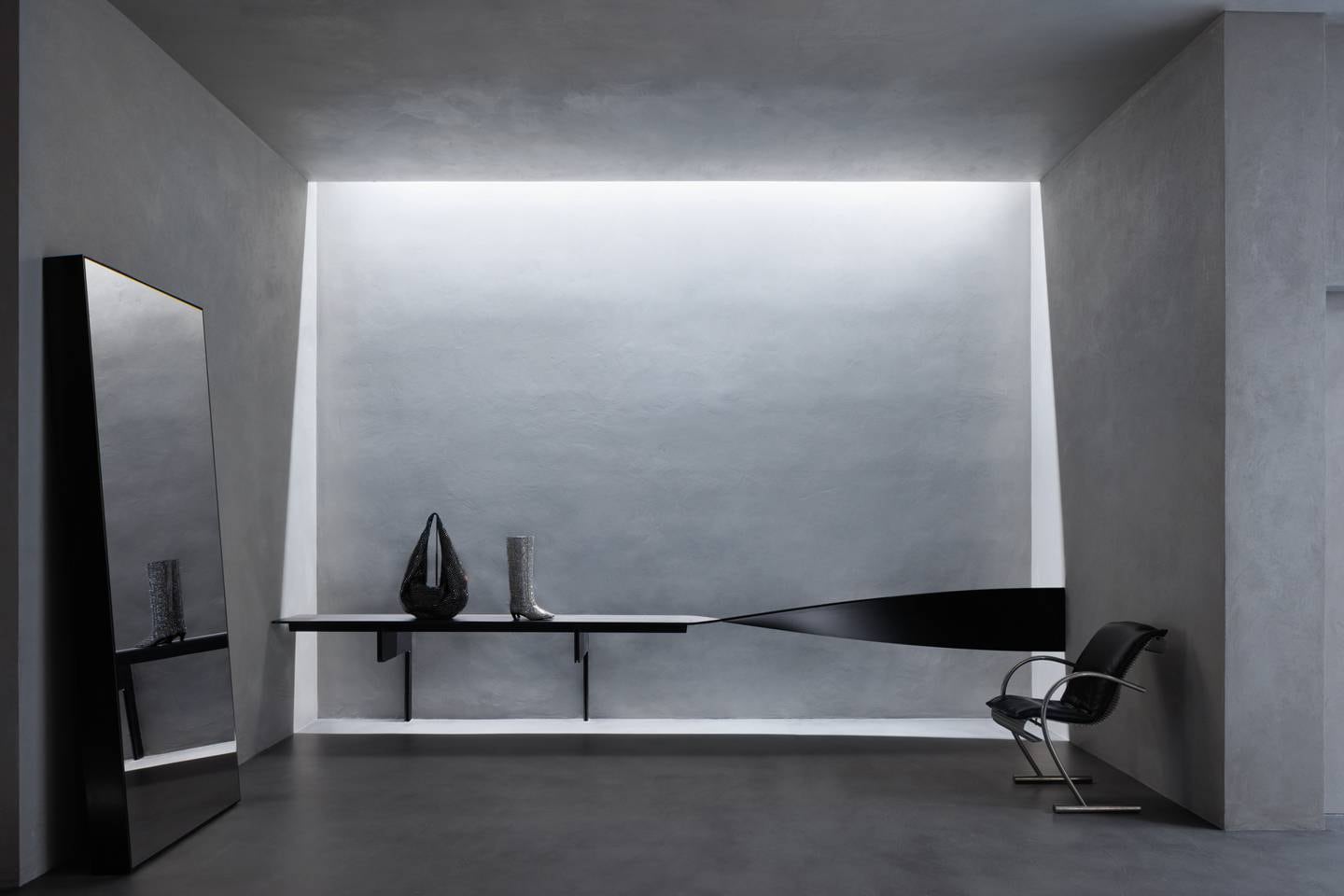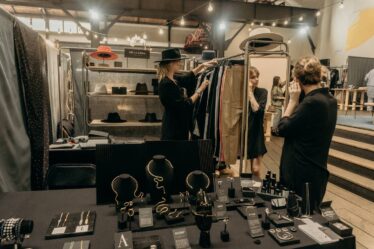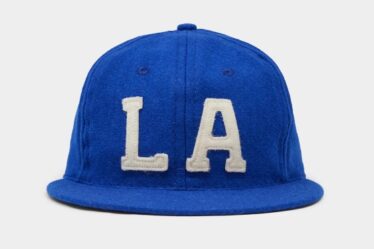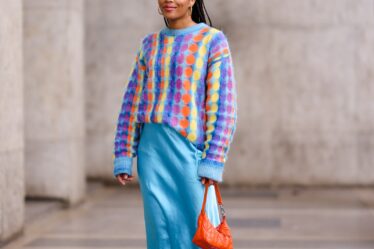
For Catherine Holstein, last year will be hard to beat.
The designer and creative director behind the New York-based womenswear label Khaite opened her first store in New York, and then a second, in Seoul. Holstein sold a stake in her company to the investment firm Stripes, and gave birth to her first child four days after the deal closed. She appointed Tory Burch veteran Brigitte Klein as her brand’s first CEO, launched eyewear and a kid’s line. Sales jumped 30 percent, after crossing $100 million in 2022. To cap it all off, she won the CFDA Womenswear Designer of the Year award for the second year in a row.
“It has been the best year of my life, but it’s also been the most transitional,” she told The Business of Fashion at Khaite’s SoHo offices a few days before its Fall/Winter 2024 runway show at New York Fashion Week. More than that, it’s been a year of vindication, she added. “It was seven years through the trenches, behind the scenes. When you say ‘I want to build a luxury brand in America from nothing,’ people say ‘This woman is crazy.’”
Khaite is the rarest of things: a homegrown New York luxury label with a real shot at becoming a global powerhouse. But turning runway buzz and CFDA awards into a household name is no sure thing. It’s perhaps never been more difficult to sustain a fashion business, particularly in the luxury category, where tiny emerging designers are often in direct competition with conglomerate-owned heritage brands boasting almost limitless marketing budgets. Early momentum can be hard to maintain: For every The Row or Tory Burch there are many more brands that stall out exactly where Holstein finds herself today.
Holstein knows all that. As she puts it: “You could have $50 million on your balance sheet, and you still need to think about where your next dollar is coming from.”
Her plan is to just keep growing, with new stores, new markets and a focus on revenue-driving categories like handbags to complement the brand’s thick cashmere sweaters, strong-shouldered jackets and wide assortment of denim. The goal is to increase sales another 30 percent this year.
However, with prosperity comes pressure. As the standard bearer for what success looks like in New York fashion, there are expectations for Khaite not only to thrive commercially, but to set the agenda for American fashion with innovative design.
That contrast was on full display in the hours after Saturday’s show: While on Instagram, fans swooned over the collection, The New York Times’ chief fashion critic Vanessa Friedman described Holstein as checking all the boxes of a brand for the ages — except for one thing.
“What she doesn’t seem to have is originality,” Friedman wrote.
Of course, a designer could garner endless critical acclaim, but it doesn’t matter much if they can’t convince customers to buy their product (or can’t raise the funds to create that product in the first place). Look at Puppets & Puppets’ Carly Mark, who won the hearts of fashion insiders but is leaving New York and will stop producing clothing after running low on cash.
But as her two CFDA trophies show, Holstein has clearly managed, on some level, to do it all. In that sense, she’s carrying on a decades-long tradition of female designers in New York who built lasting businesses by speaking to a customer they know well — themselves.
“I invite criticism and I listen. Nobody ever learned anything from being told they are right all the time,” said Holstein. “I would be lying if I said I didn’t care what they think, I am a human being, it can hurt … but I must follow my gut. I do not make things for that audience.”
The Khaite Craze
Founded in 2016, Khaite, then backed by incubator Assembled Brands, was born out of a feeling on Holstein’s part that the market lacked one brand that could provide its customer — a chic woman with pockets deep enough to afford a nearly $2,000 cardigan — with everything they needed to get dressed.
“I was a frustrated shopper,” she said. “I had to go to this place for a sweater, this place for a pair of jeans, this place for a dress, and it was just exhausting.”
That “shopper” mindset still drives Holstein. The show-stopping pieces make the runway, but much of the brand’s core assortment, such as denim, accessories and knits, are what has won it a legion of fans. For example, while jeans didn’t appear in Saturday’s show, most pairs retail for just under $500, making them a key entry item for new customers, who may eventually graduate to a $1,580 crewneck cashmere sweater or a $3,400 leather jacket.
“When you have a good hand at knits, you have a good hand at denim, and she’s able to extract ideas from everything she’s seen and put them into her own thing,” said Julie Gilhart, chief development officer of brand incubator Tomorrow Ltd. “It makes for the ingredients of a really commercial collection.”
That approach has earned the brand a loyal and influential client base. Kendall Jenner, Hailey Bieber, Beyoncé and Katie Holmes (who was responsible for the brand’s first viral moment back in 2019, wearing a matching Khaite cashmere cardigan and bra set) have been spotted in its wares.
The famous and wealthy were some of the brand’s first advocates, but success at scale means connecting with the mainstream. The ongoing “quiet luxury” conversation has helped contribute to a swell of interest on social media, a remarkable feat considering the brand’s high price point.
“Everyone’s takeaway is that it’s worth it,” said Ilana Torbiner, a content creator who frequently shares her Khaite purchases on TikTok and Instagram. “Khaite pieces are simple, but perfectly executed. You can just wear them again and again.”
The Next Chapter of American Luxury
Khaite’s muscle was on full display on Saturday, when it presented its Fall/Winter 2024 collection amid an atmosphere of the brand’s signature moody sleekness in a massive black room at Chelsea Piers. With stars and fashion insiders like Naomi Watts, Sofia Richie Grainge, Alexa Chung and Jenna Lyons in the front row, models in fur coats, leather jackets and sheer, flowing dresses walked the perimeter to a soundtrack of Radiohead and Joy Division.

“There’s a cool associated with the brand that has maintained from her early days, even as the shows have grown,” said Rickie De Sole, women’s fashion and editorial director at Nordstrom.
Since its first runway presentation in 2019, Khaite has become one of the hottest tickets at New York Fashion Week. Even as she’s become a headline event, Holstein has no interest in decamping overseas to show in Paris, like some of her New York-based peers did when they found success, including The Row, Bode and Peter Do.
“I would never leave New York to show,” she said. “This is a New York brand; we’re intrinsically New York. I love being a part of New York Fashion Week.”
But while Khaite may be regarded as a quintessential New York “cool girl” brand, its reach is much wider today. Its task now is to grow the brand further while maintaining its luxury sheen.
This year, the label will open up a second New York City storefront on Madison Avenue (that location that will focus on bags and accessories), as well as longer-term pop-ups in Aspen, Dallas and the Hamptons. Next year, Khaite will open its first permanent west coast location at the famed South Coast Plaza shopping centre in Orange County, Calif.
At the same time, Holstein doesn’t want to fall prey to the over-commercialization that befalls so many breakout American labels. Khaite is selective about its wholesale partners — it closed 10 percent of its wholesale doors last year — and wants to connect with more consumers directly, particularly top clients, for whom a dedicated VIP team hosts events across the country. It expects DTC (stores and e-commerce) to represent 40 percent of sales this year.
Holstein said she never wants customers to feel too far away from her vision for Khaite, from the stark grey concrete walls of the stores to the severe black backdrop of the runway shows.
“There is a level of intimacy that the customer feels when they’re fully enveloped in the brand,” she said. “If we are serious about being a luxury brand … I think it’s more important to stay small in your thinking, to have it still be a reflection of my feelings.”
She may be thinking small, but her ambitions are big. The brand’s next major sales benchmark is $250 million. Propelling that growth will be bags, Khaite’s fastest-growing category and a foundational revenue driver in luxury. Non-apparel (bags and shoes) represent 40 percent of overall sales; Khaite saw triple-digit growth in bags last year and introduced three new silhouettes during its latest runway show, including one named after Holstein, the “Cate” bag.
The roller coaster, surely, will continue to climb. With half of its wholesale business coming from outside the US, it’s looking to open a second headquarters in Milan or Paris within the next year, as well as potential international store locations.
“[Holstein] is a phenomenon, because she is an incredibly hard worker,” said Gilhart. “Like a Tory or a Donna, she’s having her moment.”



